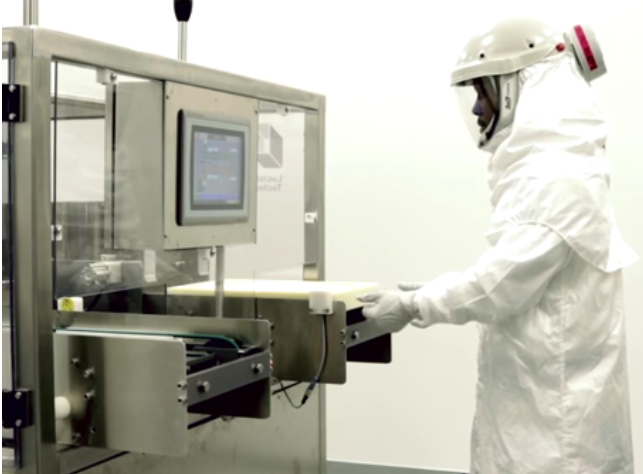 Getting a new medication to the market is not a fast or easy process, no matter how promising the drug is. There’s the research and development phase, testing, more testing, clinical trials, more clinical trials, then the arduous process of applying for and obtaining FDA approval. Most new drugs typically take years to reach consumers — that is, if they aren’t permanently derailed somewhere along the way. That’s why today’s announcement from Aprecia Pharmaceuticals is so exciting. We’ve been following the company for over a year, since they began production of their groundbreaking 3D printed epilepsy drug. The FDA officially approved Aprecia’s “ZipDose” tablets back in August, and now — finally — the drug is available to those suffering from seizure disorders.
Getting a new medication to the market is not a fast or easy process, no matter how promising the drug is. There’s the research and development phase, testing, more testing, clinical trials, more clinical trials, then the arduous process of applying for and obtaining FDA approval. Most new drugs typically take years to reach consumers — that is, if they aren’t permanently derailed somewhere along the way. That’s why today’s announcement from Aprecia Pharmaceuticals is so exciting. We’ve been following the company for over a year, since they began production of their groundbreaking 3D printed epilepsy drug. The FDA officially approved Aprecia’s “ZipDose” tablets back in August, and now — finally — the drug is available to those suffering from seizure disorders.
 The drug, called SPRITAM, is a form of levetiracetam, a medicine commonly used to treat epilepsy. It’s the first 3D printed prescription drug to be approved by the FDA and released to the US market, making today a historic one. While 3D printed pills might sound like a novelty — let’s 3D print it just because we can! — SPRITAM ZipDose tablets are likely to make a huge difference in the lives of those suffering from epilepsy.
The drug, called SPRITAM, is a form of levetiracetam, a medicine commonly used to treat epilepsy. It’s the first 3D printed prescription drug to be approved by the FDA and released to the US market, making today a historic one. While 3D printed pills might sound like a novelty — let’s 3D print it just because we can! — SPRITAM ZipDose tablets are likely to make a huge difference in the lives of those suffering from epilepsy.
Some people are pros at swallowing pills, while others — between 40 and 50 percent, actually, according to surveys — really struggle with it, and dysphagia, or difficulty swallowing in general, is a common symptom in epileptic patients, particularly older patients. To make things worse, pills generally tend to get bigger as dosages increase, so patients with the most severe symptoms often end up with giant “horse pills” that are a challenge for anyone to swallow. So much of a challenge, in fact, that many people give up and stop taking their medication, leading to more seizures.
By 3D printing the SPRITAM tablets, Aprecia was able to make them porous, meaning that they instantly dissolve in a patient’s mouth with a sip of liquid. No more painful, stressful swallowing attempts, and no more missed doses — not for that reason, anyway.
“As we explored potential applications for our 3D printing technology in prescription drug products, it was important that we identified disease areas with a real need for patient-friendly forms of medication,” said Don Wetherhold, CEO of Aprecia. “SPRITAM is designed to transform what it is like to take epilepsy medication, and is the first in a line of products we are developing to provide patients and their caregivers with additional treatment options.”
SPRITAM is now available in four dose strengths: 250 mg, 500 mg, 750 mg and 1,000 mg. The pills do get bigger as the dose goes up, but that shouldn’t make a difference anymore, as they all dissolve instantly. Considering that over three million people in the United States are living with epilepsy, this could have a tremendous impact on treatment compliance and overall health. It will also likely open the door for Aprecia and other pharmaceutical companies to further develop other 3D printed drugs, and that’s definitely something to be excited about. Discuss in the 3D Printed SPRITAM forum over at 3DPB.com.
Subscribe to Our Email Newsletter
Stay up-to-date on all the latest news from the 3D printing industry and receive information and offers from third party vendors.
You May Also Like
3D Printing Webinar and Event Roundup: May 19, 2024
This week, Stratasys continues its advanced training and starts its Experience Stratasys tour across the United States. ASTM’s AMCOE continues its professional certificate course, and SPE is offering a workshop...
3D Printing Unpeeled: Biofuel Waste to Filament & Sustainable Photopolymers
I can’t ever remember a day with so many potentially high impact news stories have come out. In one story, we all know that there are problems with the safety...
German Companies Team up to Create Traceable 3D Printing Filament
Two German corporations, plastics manufacturer GRAFE GmbH and Tailorlux, a company specializing in making “optical fingerprints” for a variety of product classes, are collaborating on a new line of additive...
Precision at the Microscale: UK Researchers Advance Medical Devices with BMF’s 3D Printing Tech
University of Nottingham researchers are using Boston Micro Fabrication‘s (BMF) 3D printing technology to develop medical devices that improve compatibility with human tissue. Funded by a UK grant, this project...


































